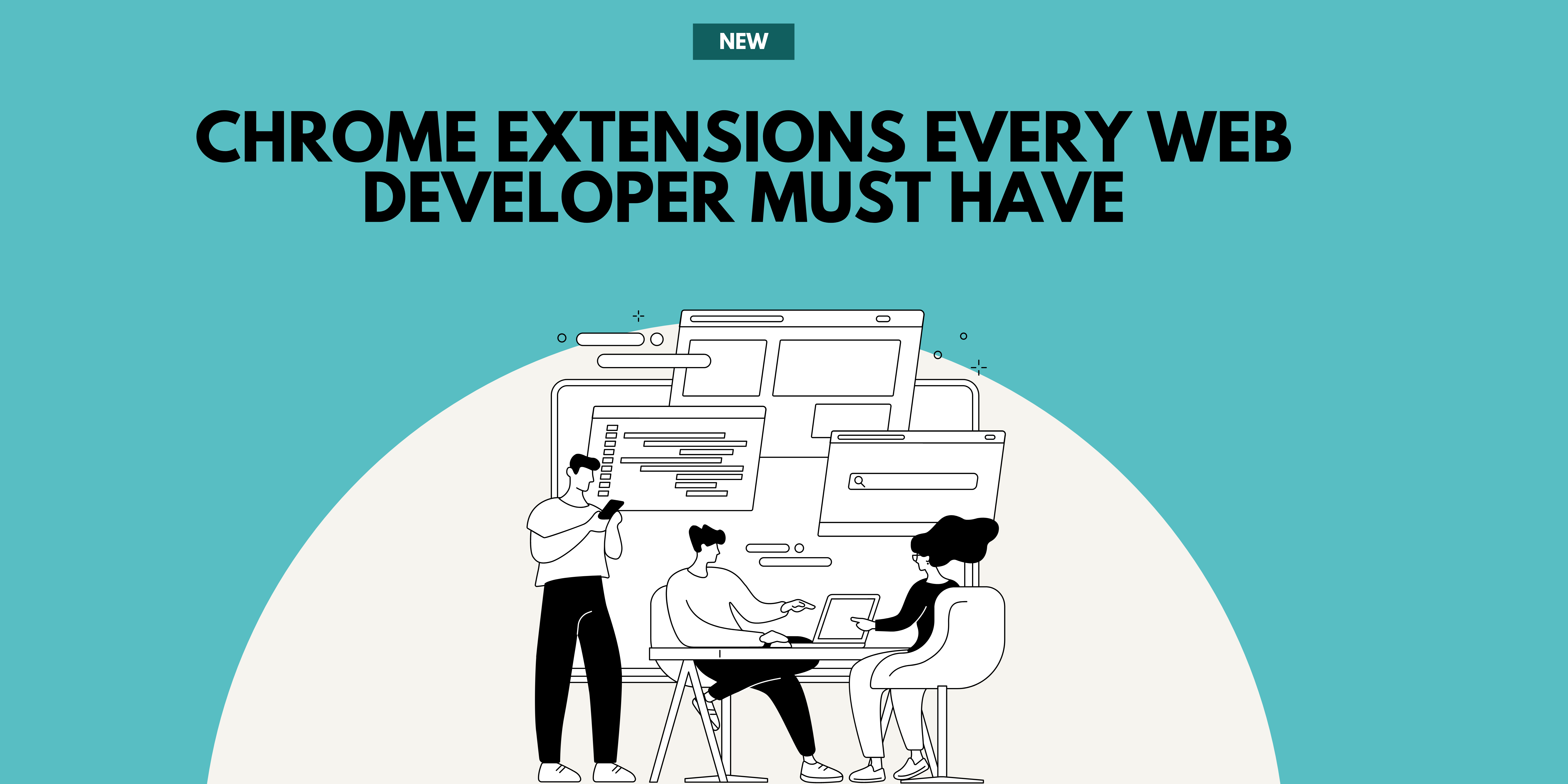Chrome Extensions Every Web Developer Must Have
By Juan Cruz Martinez
Must-have Chrome extensions that will make your life easier as a web developer.
https://livecodestream.dev/post/chrome-extensions-every-web-developer-must-have/
As developers, we use our browsers every day for all sorts of things, from googling, finding solutions to our problems on stack overflow to wasting time on Reddit (yes, I’m one of those), but also to test run the applications we are developing. It’s here where it’s crucial to have the right tools for the right job.
Around a year ago, I wrote this same post, and I collected a lot of feedback. I have since then tried many other extensions, some of which readers recommended, and I loved them.
Today I’ll be sharing with new my latest and greatest list of chrome extensions for developers.
Axe DevTools - Web Accessibility Testing
Accessibility should be one of the topmost priorities for any web developer. While we do have Chrome’s built-in Lighthouse has various parameters to test on a website, if you are someone who deeply cares for a11y issues in your project, Axe Dev Tools is helpful.
This is a fast, lightweight, and powerful testing tool that uses axe-core accessibility engine developed by Deque.
Features:
- Comes with Intelligent Guided Testing: you can do more advanced testing using a simple QnA format. It uses machine learning in the background to quickly identify and fix the issues.
- Component-level testing: if you want to test a specific part of a web page element, this helps.
- Export, Save and Share: you can easily share the test results with your team.
- What’s left to test?: this is a different test report that comes in handy for manual testing.
Download link: https://chrome.google.com/webstore/detail/axe-devtools-web-accessib/lhdoppojpmngadmnindnejefpokejbdd
Eye Dropper
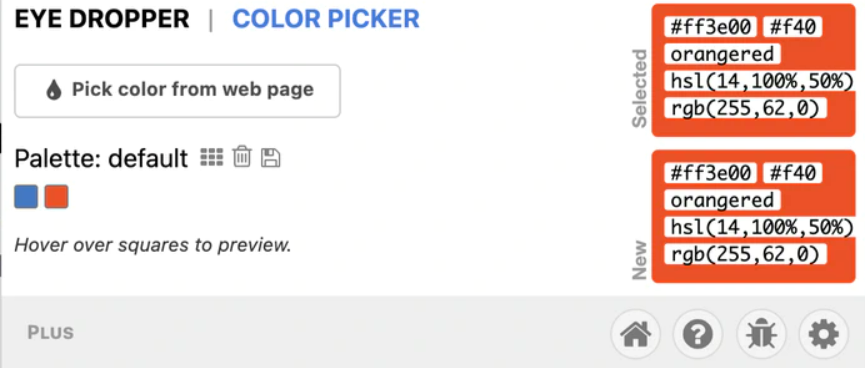
This is an open-source extension that is useful if, as a frontend developer, you quickly want to know what color or hex code some other website uses in one of their elements.
Not only from a webpage, but it can also pick colors from a color picker for more granular control.
Features:
- Pick a color from a web page: it automatically copies its hex code in your clipboard when you pick a color.
- Pick a color from the color picker: with its integrated color picker, you can manually find the color you need along with different color values.
- Pick a color from history: each color picked will be stored like a color palette so that when you come back later, you have all the colors at your fingertips.
- Open source: all the code it made open-sourced on its Github repository.
Download link: https://chrome.google.com/webstore/detail/eye-dropper/hmdcmlfkchdmnmnmheododdhjedfccka
Grepper

Grepper is an essential extension for developers as it combines the power of the Stackoverflow community and Google in one place. As you can see, we searched for the term “linked list in python” in Google and what Grepper does is that it sources the solutions given by its community members right on the search results page!
Features:
- Easily snag and access code answers: you get answers to the common coding problems right on the Google search!
- Save code answers: if you like to revisit a solution you like, you can always save it.
- Contribute to the community: if you know an answer to a search query, you can easily add your code as a contribution.
- Upvote/downvote: in some cases, you will see multiple answers for a question you searched. In that case, if you think that one of the answers is better and the other is wrong, then you can do the upvote/downvote accordingly.
Download link: https://chrome.google.com/webstore/detail/grepper/amaaokahonnfjjemodnpmeenfpnnbkco
Daily.dev

Daily.dev is a Chrome extension that comes with a feed with all the latest and greatest in the tech and dev world. The feed is personalized as per your liking, and devs from around the world save an ample amount of time with this.
You don’t have to hop from one news/blog location to another, and over 100K developers use it from around the world!
BTW, did you know that our publication makes their list, and some of our articles got featured?
Features:
- Hand-picked sources: do you have a preference for a certain website you like? Pick it from a pool of 400+ sources and get content from those only!
- Tags: all the hottest topics in the development world are grouped by tags so if you like to know about #cloud, #aws, and #frontend only, then your feed will be personalized with that.
- Never miss a trend: you get brand-new content as soon as it is published over a website. Daily.dev fetches that and shows you upfront so that you are updated on the latest!
- Community: this is what differentiates daily.dev from its competition. There is a whole community of learners, developers, and others where you can comment on someone else’s article, share it on socials or even bookmark your favorite ones.
Download link: https://chrome.google.com/webstore/detail/dailydev-the-homepage-dev/jlmpjdjjbgclbocgajdjefcidcncaied
OctoLinker

If you ever wanted to go back and forth between the multiple lines of files imported from one file/folder to another and find it frustrating then OctoLinker comes to the rescue.
OctoLinker is a browser extension for GitHub, that turns language-specific statements like include, require or import into links.
So whenever you open a file where there are multiple import statements and you quickly want to open it, then simply hover over the linked file and click to open. It’s quite similar to how things work in VSCode!
Features:
- Relative files: it uses GitHub API to fetch a tree structure of the linked files repository.
- API Docs: it links to API docs of popular tools like NodeJS, Python, Oracle, or Ruby!
- Dependency Discovery: the dependencies defined in files like package.json can easily be tracked down with their source code.
- Pull Requests: inside the code review, OctoLinker links dependencies and files on a Pull Request.
Download link: https://chrome.google.com/webstore/detail/octolinker/jlmafbaeoofdegohdhinkhilhclaklkp
Octotree
Another handy VSCode-like Github extension is Octotree. This literally builds up the tree of the entire project structure of a Github repository.
Whenever you navigate to a repo, it shows up as a sidebar that you can open to view the entire content or files inside the repo without even navigating to different folders. Not only this, but it can also work on your private repos, just give it the token and you are good to go!
Features:
- Code review: you can easily jump among files and comments in any pull request or commit.
- Multiple themes: Octotree doesn’t stop on just a regular dark and light theme. It comes with around 20+ themes along with icons themes, code font selection, etc.
- Multiple tabs: just double-click on the sidebar to open a new file on a new tab. So now you can have multiple tabs of files open inside a Github repo!
- Tree-based search: you can search for deeply nested files and bookmark any of them to visit later.
Download link: https://chrome.google.com/webstore/detail/octotree-github-code-tree/bkhaagjahfmjljalopjnoealnfndnagc
React Developer Tools

You may already have heard about it if you are actively working on a React-based project. When it comes to debugging something, nothing comes close to this extension.
It allows you to inspect the React component hierarchies right inside the Chrome Developer Tools. By default, when you open the dev tools, this extension comes with two tabs: “⚛️ Components" and “⚛️ Profiler”.
Features:
- Components tab: it shows you all of the React components that were rendered on the page. With this, you can also see their sub-components along with their properties and values passed to each prop.
- Debugging the components: when you select one of the tree components, you can directly inspect and edit the props it may have. You can debug the component, its parent, its children and so on.
- Profiler tab: this is a separate tab dedicated to measure the performance of a React app. Here you can record, edit and see in a graph-like format of a React feature.
- Open-source: all of its code lives in the Github repo.
Download link: https://chrome.google.com/webstore/detail/react-developer-tools/fmkadmapgofadopljbjfkapdkoienihi
Refined GitHub
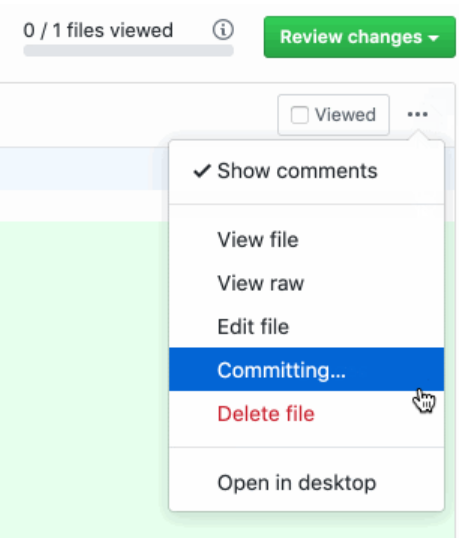
This is like an all-in-one tool to extend the capabilities of GitHub. It does two things; simplifies the overall GitHub interface and then adds useful features on top of it.
Features:
- Makes whitespace characters visible: all the whitespace characters used are now visible when you open a specific file.
- Merge conflict fixing: if you are someone who always struggles to keep track of what all needs to be changed when there is a merge conflict then this will add a series of arrows to accept the changes.
- Adds avatars to reactions: all those who added any emoji reactions to a GitHub comment will now get their avatar.
- Option to wait for checks: when working on a Pull Request (PR), it adds an option to wait for checks before confirming the PR.
- Reverting changes: if you added something wrong in a PR by mistake, you no longer need to open your Terminal and write commands to revert it, Refined GitHub adds a simple option to revert the changes easily.
Download link: https://chrome.google.com/webstore/detail/refined-github/hlepfoohegkhhmjieoechaddaejaokhf
SVG Gobbler
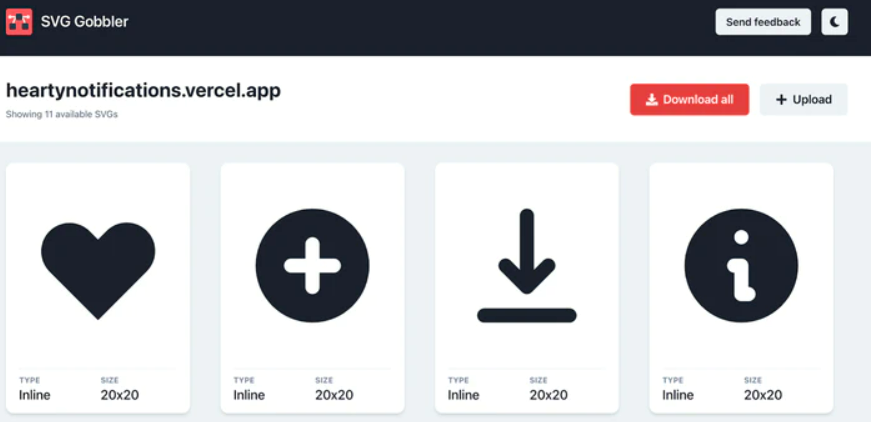
Ever thought of getting those icons, images, or other assets like illustrations used on your favorite website? What if there was a simple tool where we could easily extract all of them at once?
Well, the SVG Gobbler extension lets you do all of this with ease. You can download, optimize, and transform the code of icons, logos, and vector SVGs.
Features:
- Optimize SVG content: using SVGO it can optimize the SVG you select from websites or uploaded content.
- Transform to React code: it can quickly convert the SVG into a React component code.
- Export options: you can export all the SVGs and PNGs as multiple sizes.
- Quick design tool integration: when you select your favorite SVG element, you can simply copy it and paste it as a vector inside any of your favorite design tools like Figma, Sketch or Framer.
Download link: https://chrome.google.com/webstore/detail/svg-gobbler/mpbmflcodadhgafbbakjeahpandgcbch
Vue.js Devtools
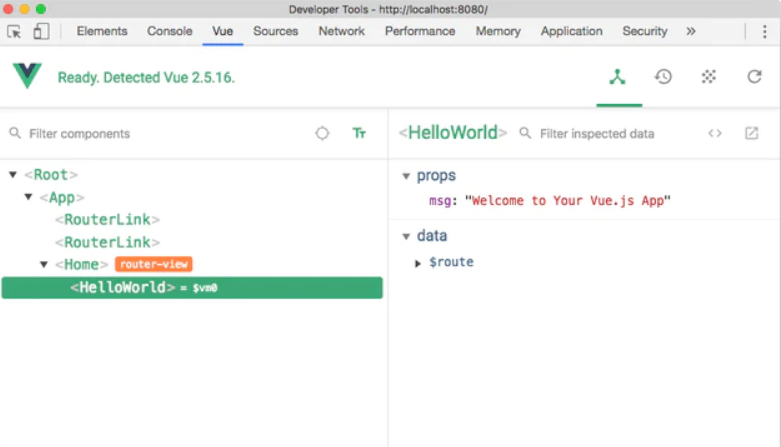
his is the Vue counterpart of the React dev tools. If you are into the Vue ecosystem, then you need to use the Vue.js devtools extensions right now.
This lets you inspect your Vue app for better debugging and understanding of how your app is working.
Features:
- Standalone app: the dev tool isn’t just available as a Chrome extension but you can also download a standalone app by running npm install -g @vue/devtools and then firing it up as vue-devtools.
- Components tab: this tab shows you all the component instances running on the current page.
- Vuex tab: here you can inspect how the overall app state is managed through Vuex.
- Events and Refresh tab: all the events emitted in your Vue app will be available in a separate Events tab while if you simply need to reload the dev tool then the Refresh tab helps.
Download link: https://chrome.google.com/webstore/detail/vuejs-devtools/nhdogjmejiglipccpnnnanhbledajbpd
Conclusion
Extensions can make our lives easier, as is the case with the ones I listed today. If you know any other tools that can help developers boost their productivity, please leave a comment to incorporate them in the article. Thanks for reading!
Learn Web Development - From Zero to Hero
 By Juan Cruz Martienez
By Juan Cruz Martienez
Do you want to learn web development but don’t know where to start?
With so many resources and specializations around learning to code, particularly learning web development, it is hard to decide which is the best option for you.
But don’t panic. In 2022, learning web development is easier than ever, and if you focus on your first steps, you will become a web developer.
Steps to learn web development:
- Learn the basics, web development, front-end and back-end specializations, and the importance of web development
- Learn the basics of front-end: HTML, CSS, and JavaScript
- Learn the tools: code editors, version control, building, and packaging
- Learn a JavaScript frameowrk: Learn React, Vue, or Angular
- Learn the basics of back-end development:programming languages, servers, and databases.
What is web development?
Web development is the process of creating websites and web applications. It includes everything from the structure of a website to the design and programming.
How do websites work?
When talking about websites, it is important to know to terms. First, we have the client (you, in your browser), and then we have the server, the device on the internet that contains the web pages we want to visualize.
For example, when you enter https://livecodestream.dev in your browser, this sends a request to our server. The server will look for the files that make up this website, particularly the page you are requesting, and send it back to your browser so you can see the content.
Everything that exists in the server, and returns the web pages you are seeing, is created by web developers.
But not all apps are built the same. Blogs like this one have a relatively easy setup (or architecture). In contrast, others like Facebook, Google, or even your local store’s website can be much more complex and require the involvement of different specializations of web developers to build such a site.
What is a front-end web developer?
A front-end web developer is a web developer that specializes in building the user interface and experience of a website or web application.
They are responsible for everything you see and interact with on a website. This can be anything from the overall layout and design to specific features like animations, videos, and forms.
To build a website or web app, front-end web developers need to have a good understanding of HTML, CSS, and JavaScript.
What is a back-end web developer?
A back-end web developer is a web developer that specializes in the server-side of things. They are responsible for everything that happens behind the scenes on a website or web app.
This can be anything from setting up the server, databases, and security to handling user authentication, data processing, and email notifications.
To build a website or web app, back-end web developers need to have a good understanding of programming languages like Python, JavaScript, Go, etc., and databases like MySQL, MongoDB, etc.
What is a full-stack web developer?
A full-stack web developer is a web developer that specializes in both the front-end and back-end of things. They are responsible for everything you see and interact with on a website or web app and everything that happens behind the scenes.
Why is learning web development important?
Web development is one of the most in-demand skills in the world.
According to recent studies, by 2022, there will be 1.5 million unfilled web development jobs worldwide. This means that if you want a successful and rewarding career, learning web development is a great place to start.
But it’s not just about the money. As a web developer, you have the power to create beautiful and useful websites that make people’s lives easier. You also can build applications that solve real-world problems.
In short, learning web development is a great way to impact the world positively.
Basics of front-end development
Now that we’ve discussed what web development is and the different types of web developers let’s talk about the basics of front-end development.
As we mentioned, front-end web developers are responsible for everything you see and interact with on a website or web app. This includes the layout, design, and user experience.
Front-end developers build web pages using three technologies HTML, CSS, and JavaScript. All these are loaded by the browser and define a website’s layout, style, and behavior.
HTML
HTML (HyperText Markup Language) is responsible for the structure of a website. It defines the content of a website and how it is organized.
It uses tags to define the structure and place the content into sections like titles, headlines, paragraphs, tables, etc., similar to what you could do on Google Docs, but it also offers more advanced features.
Here is an example of a page in pure HTML:
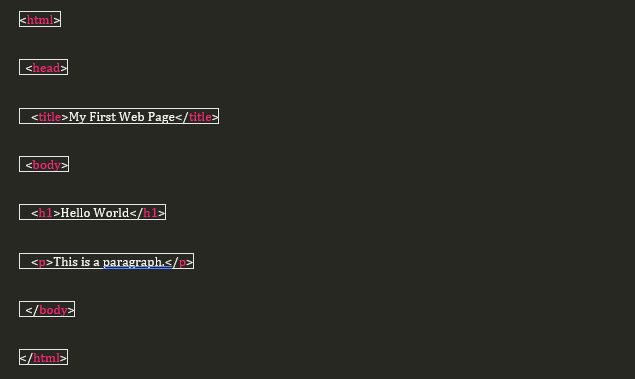
And this is what it looks like:

CSS
CSS (Cascading Style Sheets) is responsible for the style of a website. It defines how HTML elements are displayed on a screen.
It can be used to control the color, font, size, spacing, and other aspects of the page layout. CSS can also be used to create responsive designs that look good on mobile devices, tablets, and desktops.
CSS is about making it pretty.
Here is an example of CSS, which will alter any headline to have a blue colour.

And combined into our HTML

The results are in:

JavaScript
JavaScript is responsible for the behavior of a website. It makes things happen on a website, like button clicks, form submissions, and other user interactions.
It can also be used to create animations, games, and other types of interactivity. JavaScript is the most popular programming language in the world, and it’s one of the easiest to learn.
Here is an example of JavaScript

Where to learn HTML, CSS, and JavaScript?
Not every website is the same, nor are two people the same. While some of us prefer to learn by reading, others prefer video formats, and others want to jump directly into building stuff. I recommend that you follow the path you feel the most comfortable with, video or written content. However, the building part is not optional.
The only way to learn to code is by building stuff.
FreeCodeCamp
FreeCodeCamp is my default recommendation for those starting to learn to code. The website offers tutorials, videos, and even interactive courses on how to get started. It is super beginner friendly, and it is FREE.
But the website style, hard navigation, or difficulty in finding the resources are some of the downsides I heard from people. The vast amount of content their products can be overwhelming for some. and even if they have videos covering most topics on web development, they are not structured alongside the course, so the course is plain text.
Coursera
Coursera is an online education platform with courses from top universities and instructors around the world. They offer both free and paid courses on a wide range of topics, including web development.
The advantage of Coursera is that you can find some really well-made courses from prominent universities like Johns Hopkins University and Stanford University. The downside is that most of these are paid courses, so it might not be the best option if you are on a tight budget.
An excellent course is the HTML, CSS, and JavaScript for developers by Yaakov Chaikin , which the name can be deceiving, as the course is made for beginners.
Zero to Mastery
Zero to Mastery is an online learning platform created by Andrei Neagoie, a former senior software engineer at Shopify. The platform has courses from top Udemy creators and others, making it a very compelling option.
The Complete Web Developer in 2022 is an excellent course covering all the basics, and a lot of advanced stuff as well, in a well-structured and well-made course.
Udemy
Udemy is an online learning platform with over 155,000 courses covering almost any topic you can think of. While most courses are not free, they are very affordable, and some of them are even under $20 as most of the time are discounted.
The advantage of Udemy is that you can find a course on almost anything, from cooking to web development. The downside is that the quality of courses can be very hit and miss, as Udemy does not vet its instructors.
The Complete 2022 Web Development Bootcamp is one of the most watched and best-rated courses on Udemy with an amazing over 700k students enrolled in the course. It covers the theory and gets hands-on projects.
Udacity
Udacity is known for its nanodegree programs, which are fantastic for learning and train new skills as they provide tutors, and you work on real-world examples while learning. However, they can be a bit pricey.
But Udacity also offers courses, and in fact, they have a great free HTML+CSS course and a separate free course for JavaScript , which are great to get you started.
YouTube
YouTube is an excellent platform for finding free development resources, as most popular channels regularly post new content.
The advantage of YouTube is that you can learn at your own pace and go back and forth as often as you need. The downside is that finding a well-made comprehensive course can be challenging, and you might need to watch a few videos from different channels to get a well-rounded education.
Here are some great resources to get you started with HTML, CSS, and JavaScript on YouTube:
- HTML Tutorial for Beginners: HTML Crash Course for HTML and CSS, and JavaScript Tutorial for Beginners: Learn JavaScript in 1 Hour to learn JavaScript by Programming with Mosh
- Learn HTML5 and CSS3 From Scratch - Full Course by freeCodeCamp
Books on web development
If you prefer learning from books, then you might want to check out some of these excellent titles:
- Web design with HTML, CSS, JavaScript and jQurery Set by Jon Duckett
- Eloquent JavaScript by Marijn Haverbeke
- JavaScript:The Definitive Guide by David Flanagan
Tools for web developers
Even though it is true, you don’t need any particular tool or system to be a developer, and a simple notepad could be enough. On a single day, developers use several tools to help them be more productive, collaborate in teams, and back up code.
Code editors and IDEs
A code editor is a text editor with extra functionality specifically for programming, such as syntax highlighting (visual color guides that make it easier to read and understand code), indentation, autocompletion, and debugging.
A good code editor will make you more productive and help reduce code errors. The most popular code editor by far is Visual Studio Code , it’s 100% free, and it’s my recommendation to get you started. Other popular options include Sublime Text and Notepad++ .
Code editors are great, but there’s something more. IDEs (or Integrated Development Environment) are code editors with even more functionality, such as debugging tools, version control integrations, project management, etc.
The most popular IDE for web development is WebStorm by JetBrains. It’s not free and can be a bit expensive. I use WebStorm and the whole suite from JetBrains. I have been using it for years now, and it’s just super familiar, and I’m super productive with it, though I don’t recommend it for everyone, especially if you are just getting started.
Source control
Source control is a system that keeps track of every change you made in the code, and allows you to navigate through your history of changes and revert your code to the status it was at any point in time.
Source control systems are an invaluable tool for individual developers and teams, as they make collaboration and working on the same files much easier.
The most popular source control system is Git, and it’s what I recommend you use.
GitHub is a website that allows you to store your code online (in the cloud), and also provides many features for collaboration, such as issue tracking, pull requests, wikis, etc. It is the most popular platform for open-source code (as it is free for open-source), and it is a website you need to know and use, as it will serve as a portfolio and show future recruiters and interviewers what you have been learning and working on.
Build tools
There are all kinds of build tools, but for the purpose of web development, they are programs that process and transform files, for example, they can take your source code and minify them to reduce its size to optimize the load speed of your website.
But that’s not it, they can also enhance the compatibility of your code, and convert your code from one language to another (at least to a certain extent), for example, they can convert SASS into CSS, or newer JavaScript versions into older ones (yes, we do that to have better compatibility with older browsers while coding with the latest and shiny)
Among the most popular options are Webpack , Rollup , and Gulp.
In many cases, especially as you are learning, you won’t need to work directly with these, we often use libraries or tools that configure them automatically for us, but its good to know they exist and what kind of magic they do behind the scenes, so be familiar with them, and start exploring them in more detail once you feel comfortable working with code and building websites and web applications.
Package managers
Once you gain some experience and built a few projects you will start noticing that many times you reutilize some code or functionality that you have copied and pasted from one place to the other. But can we do better? What if I want to share my code with others? Here is where libraries come into place.
Libraries are code written by other people (or yourself) that we can use in our projects to speed up development, or just not have to reinvent the wheel every time we need some specific functionality.
A package manager, allows you to install, update and remove libraries and tools from your projects and systems.
There are different package managers for different programming languages, but the most popular one is npm , which is the default for JavaScript.
Learn a JavaScript framework
Now that you know the basics of JavaScript it is time to introduce you to the world of frameworks.
A framework is a library that provides a set of tools and standards to help you structure and organize your code, so you don’t have to start from scratch every time you build something.
There are many frameworks available for different programming languages, but in the case of JavaScript, there are three major ones: React , Angular, and Vue .
Which JavaScript framework should I use?
There is no right or wrong answer when it comes to choosing a framework, as there are many factors that come into play such as the size of your project, the team you are working with, your own preferences, etc.
I always recommend React to start as it has the fastest learning curve and is my favorite, but I also recommend at least reading about and building a sample application on Angular and Vue, and seeing for yourself which one you like the most.
What I don’t recommend, is that you learn more than one at a time, it will add complexity and it will be harder for you to specialize and become an expert in either of them. Try them out, see what you like the most, and go deep into that one, and only that one. With time you can expand, but take it from me, I’ve tried dozens of frameworks, but if I need to work on a project, I always go with React as it is where my knowledge is.
Course reccomendations for React:
- React - The Complete Guide (incl Hooks, React Router, Redux)
- Become a React Developer
- Meta Front-End Developer Professional Certificate
Course reccomendations for Angular:
- Angular - The Complete Guide (2022 Edition)
- Complete Angular Developer in 2023
- Full Stack Web Development with Angular Specialization
Course reccomendations for Vue:
- Vue - The Complete Guide (incl. Router & Composition API)
- Complete Vue Mastery 2023 (Pinia, Composition API, Vitest)
Basics of back-end development
Now that you know how to build the front-end of websites and web applications it is time to learn about the back-end.
The backend is responsible for everything that happens behind the scenes, such as storing data, processing requests, handling security, etc.
Just like with front-end development, there are many different back-end programming languages, but the most popular ones are Python, JavaScript, Java, and Go.
Out of these, I recommend learning Node.js as it is JavaScript and you already know the basics, plus it has a lot of momentum right now and is used by some of the biggest companies in the world such as Netflix, Uber, and eBay.
Course recommendations for NodeJS:
Course reccomendations for Python:
- 2022 Complete Python Bootcamp From Zero to Hero in Python
- Crash Course on Python
- Introduction to Python
Course Reccomendations for Go:
SQL and Databases
No matter what back-end language you choose, at some point you will need to interact with a database.
A database is a collection of data that is stored in a structured way so that it can be accessed and processed by computers.
To work with some databases you will need to learn a new programming language called SQL.
I wrote a full guide on SQL that I recommend you read to have all the basics of this programming language.
Final thoughts
First of all, congrats on taking the initiative and making it all the way here, you are decided and you will be a fantastic developer, I’m sure.
It is a lot! I know! Learning to code takes time, and you shouldn’t rush through it, enjoy the journey, make sure to practice while learning, and build amazing stuff!
"I’m 100% sure you can make it, with dedication and patience, you will become a great web developer!"
Before I go, check out my free ebook with tips for the self-taught developer, it’s a good companion read and can help you have the right mindset for your journey.
Free download here: https://livecodestream.dev/newsletter
I hope this guide to learn web development helped you understand what it takes to become a web developer, if you have any questions or want to share your own experience leave a comment below!
If you liked this article please share it with your friends and followers on social media, and if you want to stay up-to-date with my latest articles and projects follow me on Twitter .
Thanks for reading!



